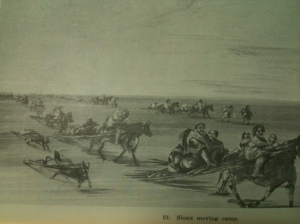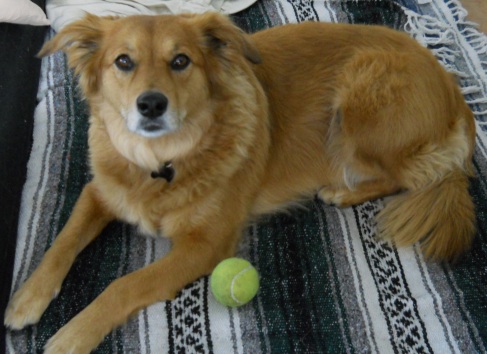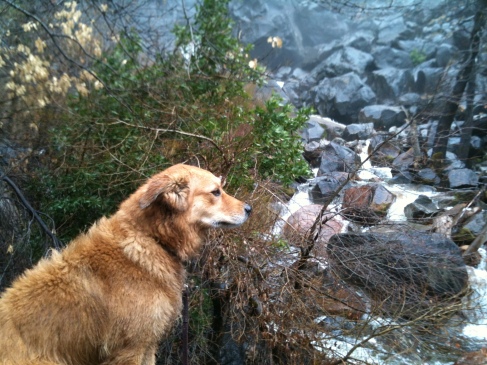Grizzly bears (Ursus arctos) used to be in every state in the USA (except Hawai’i) until European settlers began systematically extirpating them. Grizzlies had been respectfully lived with in (relative) peace by the American Indians for ten thousand years, but they were seen as a threat to settler’s livestock and feared as vicious killers. Quickly, the new “shoot on sight” approach to bear management killed off their populations everyone except the remote mountains.
Nowadays, only the most distant fastnesses of mountain wilderness in Montana, Idaho and Washington, or throughout Alaska are the only places in the US these awesome, hulking beasts are still found. If we respect them and allow them space, maybe one day they will return to the wild undeveloped Rockies and Sierras, as the black bear has been making such a comeback after being similarly viciously oppressed (very recently, the black bear has returned to the Chisos mtns. of Big Bend, TX, and are thriving in CA so that here a week-long, archery-only hunting season is allowed).
Grizzly bears are light brown to dark brown and have a more predatorial look than the smaller, pudgier black bears (which actually range from light brown to black). Grizzlies are distinguished by their powerful jaws, strong arms, muscle-bunched shoulders, and a trim body. They are more likely than black bears to attack, kill, and eat people with no (apparent) provocation. Oh and if you’re lucky enough see a polar bear, it is surely lusting after your blood. Without a powerful gun, fast vehicle or sturdy building, it’s probably going to hunt you down and eat you.
BEAR ATTACKS
A grizzly being aggressive is most likely a sow with cubs nearby that to her you are seemingly threatening. Otherwise, it may be defending a carcass cached nearby, or it’s a worked-up, frustrated boar in mating (=fighting) season, or maybe it’s a mean one and it just doesn’t like your stupid fucking face. Usually, slowly backing away while facing the bear, but not looking directly in its eyes (them’s fightin’-eyes in bearspeak), or going far to one side and around the bear to continue on your way will make the bear calm down and not kill you. Or the bear will step up the aggression.
Now black bears will bluff charge, meaning they’ll rush you head-on, but stop just short if you don’t flinch (good luck). But grizzlies aren’t known to bluff charge, and they can easily out-sprint Usain Bolt (and running from a predator tells them you’re prey), so you have several options if an attack is imminent:
1) Kill the bear. Only a high powered rifle (.357 cal +) shot in the head or chest is a reliable bear-stopper. Any lower caliber not perfectly placed in the heart (it’ll still have a good few minutes of steam then) will just infuriate the bear more.
2) Bear spray. These formulations of aerosol pepper-spray may burn and temporarily blind the bear and cause its retreat, but it could still catch and kill you.
3) Climb a tree. Bad move if the bear can knock the tree down or climb it up to you, so choose a sturdy tree and climb high, fast.
4) Play dead. Curl in a ball, protecting the back of your neck with your hands, and hope it gets bored of batting you around. This will take balls and luck. A large backpack may help protect you so if you have one, keep it on.
5) Be a complete and utter badass and use a wooden club to break all of its legs (one per charge), then smash its massive skull when it’s disabled (see story below).
Really there is no fail-safe method of avoiding or mitigating a bear attack. The best response is to gauge the bear’s behavior and try to prevent it stepping up the aggression. It’s recommended to speak loudly regularly or wear a bell or something in grizzly country because bears have poor vision and hearing compared to us and are often incited to anger when spooked by people unexpectedly coming too close for their comfort. Bears, grizzlies or blacks, are not inherently malicious (ok the polar bear is pretty bloodthirsty), and if they have a choice to avoid confrontation, they will.
I got a lot of this info from “Longbows in the Far North” by E. Donnell Thomas Jr, a guy who’s hunted and killed both black and grizzly bears with his longbow.
DIET
After hibernation, grizzlies scavenge carcasses killed by severe winter weather or kill and eat animals weakened by the winter (Frison 2004). As plants become available, grizzlies eat more as the spring progresses (Frison 2004). They eat rodents, newborns, and very young of many animals, especially elk (Frison 2004). Spawning salmonids are a classic grizzly food (Frison 2004). Pine nuts, and army cutworm moths (Euxoa auxilaris) are important late summer foods (Frison 2004: 187-188). Grizzlies are known to love lots of berries, honey, and lily roots, but are highly omnivorous and can learn to exploit many new food sources, including from humans.
GRIZZLY ROPIN’
Grizzlies were hunted by 18th century Spanish vaqueros (cowboys) in California, who threw rawhide reatas (lariats / lassos) from horseback around the bear’s neck (Frison 2004). To bait the grizzlies, the hunters would kill a mare and open its intestines in a spot that bears would find and have little cover or escape holes nearby (Storer and Tevis 1983). Covering the carcass with brush prevented vultures from stealing the bait (Storer and Tevis 1983). The first night, the bait was left alone so the bears would be less wary and more bears may come (Storer and Tevis 1983). The second night, 2-5 hunters with horses would wait quietly downwind of the bait (Storer and Tevis 1983). The most experienced bear-hunting horse would notify the hunters when the bear arrived (Storer and Tevis 1983). Then the hunters would ride down and lasso the grizzly around the neck, body, or legs (Storer and Tevis 1983). The rope must be kept taut or the bear can easily remove the lassos (Storer and Tevis 1983). Larger grizzlies required multiple lassos (Storer and Tevis 1983).
Despite extreme danger to horse and man, the horses displayed “remarkable …sagacity and skill” in the hunt, and “delight in mastery of the bear” (Storer and Tevis 1983). Experienced bear hunting horses exhibited great agility dodging the lasso ropes being violently pulled about that could otherwise disastrously entangle their legs (Storer and Tevis 1983). Such horses would not run away from or to the side of attacking bears, instead knowing it is easier to wait until the last moment while directly facing the grizzly, then leap over it completely, and turn around to face the grizzly before it did (Storer and Tevis 1983). Grizzly hunting horses would tremble with loud heartbeats from as soon as a bear is seen til the moment it was taut on the lasso, when it would then be in the highest glee (Storer and Tevis 1983). Damn, horsey! I guess that’s why horses (especially stallions) were so useful for mounted warfare. I think it was Cormac McCarthy who wrote something like “a man doesn’t know the true spirit of horses until he has been into battle with one.”
An account of a bear taken this way describes how it was then brought down to a ranch and secured by its hind feet to a sturdy timber and had its forepaws tied to a strong stake: “The bear lay with his head between his huge paws, covering his eyes, save occasionally, when he would furtively lift his eyes, like a sulky child, to look at his captors; then covering his eyes again, remain a moment, and steal another look. Soon he gave heavy sighs, and some one said, ‘He is dying! … he is not wounded, but his heart breaks—he dies of rage.’ And, in a few moments he had breathed his last…” (Storer and Tevis 1983).
CA GOLDEN BEARS
Depredation of livestock by grizzlies whose former forest had been razed for rangelands incited the killing off of grizzlies from much of their former range in America (Frison 2004: 52, 189). Formerly, grizzly populations were denser in California than anywhere else in the world. The largest individual grizzlies ever recorded were from California. Many grizzlies in California had a golden yellow or light brown coat, and became known as the “golden bear” (CA is the “golden state”). The golden bear was first featured on a flag in California during the Bear Flag Revolt of 1846, which made California a Republic. The Bear Flag became the state flag of California in 1911 and the last California Grizzly Bear was shot in Tulare County, CA in August 1922. Over thirty years later, in 1953, the golden bear became the state animal of California.
INDIANS AND BEARS
The California Indians had a really different relationship with grizzlies. Their similarity to man, both in appearance and diet, made the Indians much more aware of their kinship, calling them brothers. It was said that the first men learn to fish from the heron, to hunt from the coyote, etc. but some foolish hunter killed the bear before they could learn its trick of sleeping all winter, so now they have to tough out the cold and hunger.
Women out gathering were really likely to encounter bears since they were often after the same foods; berries and roots. Especially in manzanita berry season, when bears basically lived in the manzanita groves in which the women would go out to each day to pick. When a grizzly or other bear was encountered, it was addressed in a normal voice something like; hey bear, I’m just out picking berries too, don’t mess with me; go away, leave us alone. Then the bear would go away or the people would. Sometimes though, some ornery old boar or sow with cubs would get aggressive. In such a case, a good tree would be climbed, or a hunter would try to kill the bear.
Here’s one bear fight story: mountain mohogany (Cercocarpus betuloides) wood is extremely hard, and used for making arrow foreshafts, digging sticks, and clubs (Chesnut 1902). One Indian reported how when he was a small child, a grizzly threatened his father and him, whereupon his father placed him into a high fork of a tree for protection, and when the bear charged the man, he waited til the last instant, then leaped aside, simultaneously striking the bear’s leg with his mountain mahogany club (Chesnut 1902). Enraged, the bear continued its charging attacks, and the man repeated clubbing its legs one by one until the bear was crippled, and could no longer walk (Chesnut 1902). At this point, the man walked up to the stricken bear and clove its skull with a mighty blow, instantly killing it (Chesnut 1902).
Now that’s so much more hardcore than lassoing the poor bear with your mounted buddies out on a trip just to torture and kill bears.
Many Indians bore old scars from wounds inflicted in bear fights. The Fresh roots of Oregon ash (Fraxinus oregana) were mashed and used by the Yokia Indians to cure wounds inflicted in fights with bears (Chesnut 1902).
Even polar bears were hunted and killed by the Inuit. They would exploit the bear’s relative inferior mobility while swimming and harpoon the bear from their kayak.
Another effective, but cruel, trick of the Inuit for polar bear hunting was to carve out a thin, wide strip of springy whalebone about a foot or so long, then roll it into a fist-sized ball, keeping it that shape by covering it with fat, then tying a string around it and freezing it. When the fat froze it kept the bone rolled up and the string was untied, and more fat applied and frozen around it. Then they simply left the ball somewhere the bear would find it, whereupon the bear would swallow it whole, thinking it was just a tasty ball of fat treat. But once its body heat and stomach acids melted the fat, the whalebone would spring back out into its long shape, puncturing the bears stomach and intestines, making it die a slow and painful death. Then the Inuit would track it from the spot they left the ball and collect a massive pile of meat and bones, and its huge pelt.
References:
Chesnut, V. K. 1902. Plants used by the Indians of Mendocino County, California. Government Printing Office, Washington, DC.
Frison, G. C. 2004. Survival by hunting: prehistoric human predators and animal prey. University of California Press, Berkeley, CA.
Storer, T. I., and L. P. Tevis, Jr. 1983. California grizzly. University of California Press. Berkeley, CA.













